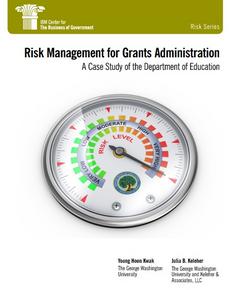
Risk Management for Grants Administration

The Department of Educaton (ED) maintains many risk management tools, two of which are new: the State Score Cards and the Entity Risk Review. This report explains how these two tools are being used and provides examples of how risk management tools have been used to track the progress of two high risk grantees: Detroit Public Schools and Puerto Rico. Based on their examination of the ED experience, the authors present a series of lessons learned and recommendations for other agencies. A major lesson is that the use of an automated, data-driven risk assessment tool enabled the department to apply uniform and consistent risk assessment procedures and make better use of audit data. The authors also learned that effective risk management is an iterative process that requires thoughtful use of existing data sources and consistent efforts to incorporate new ones. In looking ahead to how other federal agencies can successfully implement risk management activities, the authors caution that risk management practices may represent a major change for some agencies and should be accompanied by training and capacity-building programs. The authors also note that agencies should take advantage of the U.S. Office of Management and Budget’s new risk management requirements as an action-forcing event to improve risk management in the award and oversight of federal grants in their agencies. This report continues the IBM Center’s long interest in risk management in the federal government. The following IBM Center reports have examined other approaches to risk management in government: Karen Hardy examined how chief financial officers and financial managers can guide their agencies in taking a more holistic approach to risk management by implementing an Enterprise Risk Management (ERM) system (Managing Risk in Government: An Introduction to Enterprise Risk Management). James Bailey developed a checklist to assist government managers in implementing improved control and auditing programs in response to the demand for greater fiscal accountability and transparency (Strengthening Control and Integrity: A Checklist for Government Managers). Tom Stanton examined how federal credit programs can more effectively manage the risk inherent in their loan portfolios (Federal Credit Programs: Managing Risk in the Information Age). We hope that government leaders who are interested in implementing risk management initiatives will find the Department of Education’s experience helpful and instructive as they strive to improve the management and oversight of federal funds.



